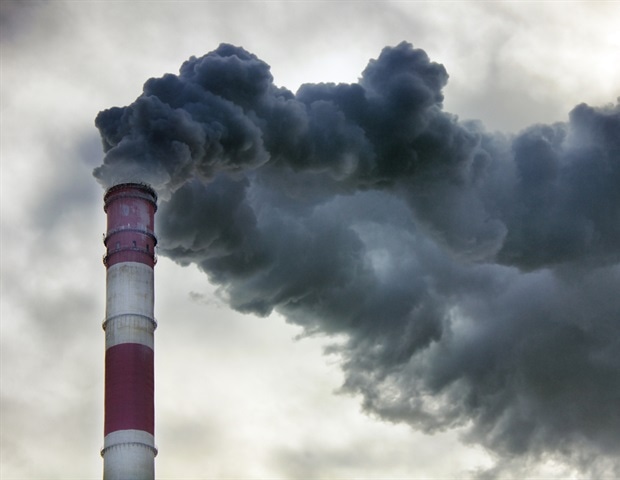Prenatal exposure to air pollution increases the risk of severe respiratory distress in newborn babies, according to new research conducted at the Penn State College of Medicine in collaboration with the Maternal-Infant Research on Environmental Chemicals (MIREC) Study led by Health Canada. The risk increases with exposure specifically to fine particulate matter (PM2.5) and nitrogen dioxide (NO2), which occur in wildfire and cigarette smoke and vehicle emissions, among other sources.
The findings, which published on Jan. 25 in the journal Environmental Health Perspectives, reveal a better understanding of infant respiratory distress, the leading cause of admission in neonatal intensive care units and death among newborns worldwide.
Mothers’ exposure to air pollution while pregnant is known to be associated with adverse long-term respiratory issues, such as asthma, in their children. However, what we didn’t know is that maternal exposure to air pollution could cause babies to suffer severe respiratory distress soon after birth.”
Chintan K. Gandhi, assistant professor of pediatrics at Penn State and corresponding author of the paper
To conduct their study, the researchers analyzed data from the MIREC Study, a multi-year study that examined the exposures of 2,001 pregnant women from 10 Canadian cities to environmental chemicals, including PM2.5 and NO2. The MIREC Study team estimated the women’s exposures to PM2.5 and NO2 beginning three months prior to pregnancy through the end of the third trimester by using models based on satellite information and ground-level air quality monitoring devices.
The MIREC team found that during the study period, the women were exposed to PM2.5 concentrations ranging from 1.47 to 23.71 micrograms per cubic meter of air (μg/m3), with a median of 8.81 μg/m3, and NO2 concentrations ranging from 1.72 to 53.10 parts per billion (ppb), with a median of 18.02 ppb. To provide context, the U.S. Environmental Protection Agency provides standards for maximum annual exposures of 9.0 to 10.0 µg/m3 for PM2.5 and 53 ppb for NO2.
However, Gandhi said, “There really is no safe level of air pollution.”
Using data from the MIREC study, the team led by Penn State researchers examined associations between the mothers’ exposure to air pollution and physician-diagnosed respiratory distress in newborns. The examination extended beyond diagnosis to encompass the severity of respiratory distress, quantified by the necessity for oxygen, mechanical ventilation and systemic antibiotics in the infants.
“This nuanced approach provides a comprehensive understanding of the intricate relationship between maternal air pollution exposure and the varying degrees of respiratory distress observed in newborns,” Gandhi said.
Key findings from the collaborative research include:
- Increased risk of severe respiratory distress: Babies born to mothers exposed to higher levels of PM2.5 were more likely to experience severe respiratory distress, requiring interventions such as assisted ventilation and systemic antibiotics.
- Consistent associations across pregnancy stages: The association between PM2.5 exposure and severe respiratory distress remained consistent whether the exposure occurred during the pre-pregnancy stage or at any stage during pregnancy.
- NO2 exposure and systemic antibiotics: NO2 exposure in mothers was associated with an increased need for systemic antibiotics among babies.
Gandhi highlighted a crucial observation in the study, noting that the incidence of respiratory stress in babies remained consistent across various levels of air pollution exposure. However, the significant revelation emerged in the escalation of severe respiratory stress with increasing levels of exposure.
“We found that the more air pollution mothers were exposed to, the greater the chances that their babies would suffer severe respiratory distress,” he said.
While the team did not investigate the specific mechanism through which pollutants are transmitted from mother to child, Gandhi pointed to previous research indicating heightened inflammatory markers in mothers exposed to air pollution. These markers, detected through blood tests in the same cohort of mothers, underscore a potential pathway for the impact of air pollution on maternal health and its subsequent influence on newborns, he said.
“Our findings hold substantial importance as they suggest that preventing death and illness in babies due to respiratory distress is plausible through the reduction or elimination of air pollution,” Gandhi said. “It is imperative for policymakers to grasp the gravity of this situation.”
Other authors on the paper include Markey Johnson, research scientist, Health Canada; Lauren Mazur, graduate student, Penn State; Mandy Fisher, senior epidemiologist, Health Canada; William Fraser, professor, Universite de Sherbrooke; Liu Sun, scientific evaluator, Health Canada; and Perry Hystad, associate professor, Oregon State University.
The MIREC study was funded by Health Canada’s Chemicals Management Plan, the Ontario Ministry of the Environment and the Canadian Institute for Health Research.
Source:
Journal reference:
Johnson, M., et al. (2024). Prenatal Exposure to Air Pollution and Respiratory Distress in Term Newborns: Results from the MIREC Prospective Pregnancy Cohort. Environmental Health Perspectives. doi.org/10.1289/ehp12880.
